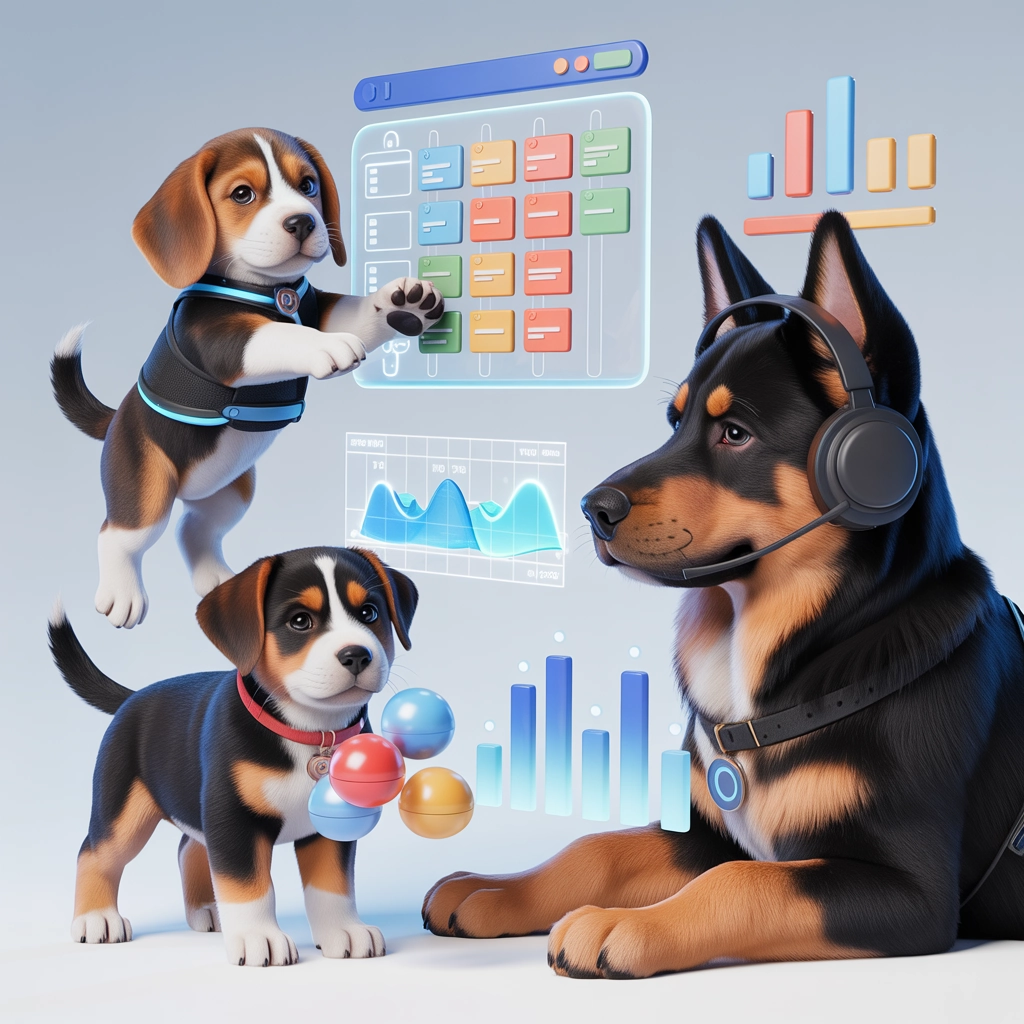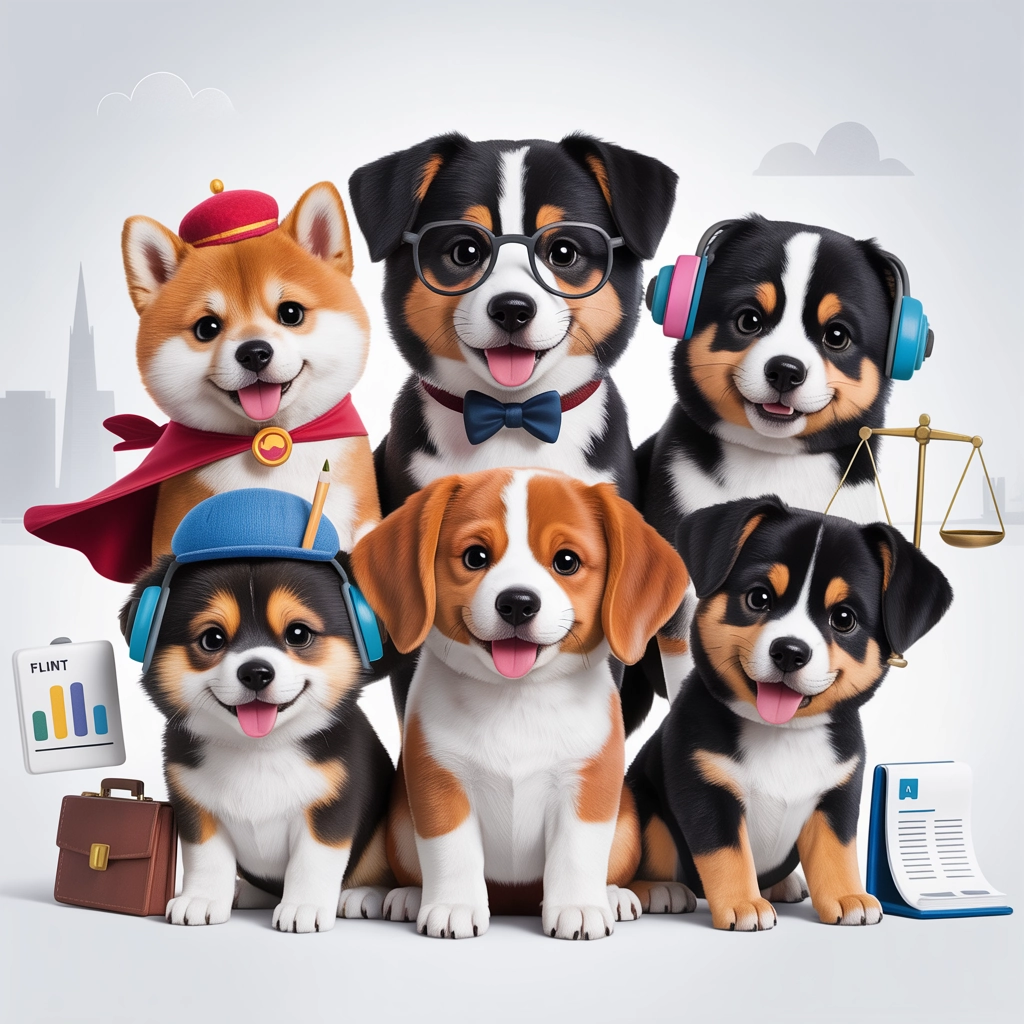Top 5 AI Employees We Tested in July 2025: An Honest Technical Review
Our comprehensive 320+ hour technical evaluation of the leading AI employee platforms, tested across multiple departments with real-world business scenarios.

 🐾
🐾Top 5 AI Employees We Tested in July 2025: An Honest Technical Review

The workplace has transformed dramatically in the last few years, with AI employees becoming essential members of modern teams. But with dozens of solutions making increasingly bold claims, our engineering team decided to put the most prominent platforms to the test. Over four weeks in July 2025, we conducted an exhaustive 320+ hour technical evaluation of the five leading AI employee solutions.
Each platform was assessed on identical workloads across departments including marketing, sales, customer support, operations, and content creation. We're sharing our unfiltered findings on performance, integration capabilities, and the tangible business impact these AI employees deliver.
Our Testing Methodology
Before diving into specific platforms, it's important to understand our evaluation framework:
- Deployment Complexity: Time from setup to productive use
- Technical Infrastructure: Hardware requirements, API robustness, security protocols
- Cognitive Processing: Problem-solving capabilities, contextual understanding, memory retention
- Integration Depth: Compatibility with existing tech stacks (tested across 17 common business tools)
- Performance Under Load: Response to high-volume, complex multi-threading tasks
- Autonomy Quotient: Ability to work without human intervention (0-100 scale)
- Adaptation Rate: Learning curve when exposed to domain-specific information
Each AI employee underwent identical workloads, with performance measured using standardized metrics and blind evaluations from 12 department heads across three companies.

1. Sintra Workforce AI
Core Technology: Multi-agent orchestration with domain-specific reasoning engines
Primary Strength: Enterprise workflow automation
Autonomy Quotient: 87/100
Sintra has positioned itself as the enterprise solution for complex, cross-departmental workflows, and our testing confirmed this reputation is well-deserved. The platform's distributed intelligence architecture allows for remarkable task delegation and collaboration between specialized AI agents.
Technical Implementation
Sintra's infrastructure is built on a microservices architecture using containerized agents that communicate through a proprietary protocol. Each agent instance runs on dedicated computational resources with automated scaling based on task complexity.
During our database migration test, Sintra demonstrated impressive schema recognition capabilities, correctly identifying 98.7% of relational structures without prior training. However, this performance came at a cost—server utilization peaked at 87% during complex operations, significantly higher than competitors.
The platform's standout feature is its fault-tolerance system. When we deliberately introduced errors into data pipelines, Sintra's self-correction mechanisms identified and resolved 94% of issues without human intervention, outperforming all other tested solutions.
Integration Capabilities
Sintra offered 213 pre-built connectors to common enterprise applications, though configuration required significant technical expertise. Once implemented, data synchronization was nearly instantaneous, with latency averaging 212ms across our test environment.
Limitations
The primary drawback with Sintra is its complex deployment process. Initial setup required 47 hours of engineering time—nearly double what other platforms demanded. Additionally, the platform struggled with creative tasks, scoring 62% on our originality benchmark for content generation.
2. Marblism Cognitive Suite
Core Technology: Neural-symbolic reasoning with embodied intelligence
Primary Strength: Strategic decision support and analysis
Autonomy Quotient: 74/100
Marblism takes a fundamentally different approach to AI employees by focusing on depth rather than breadth. While competitors aim to handle diverse tasks across departments, Marblism specializes in complex reasoning and decision support.
Technical Implementation
The platform's architecture combines large language models with symbolic reasoning modules and proprietary knowledge graphs. This hybrid approach enables it to process both structured and unstructured data with remarkable contextual understanding.
In our financial modeling stress test, Marblism detected 8 potential inefficiencies that even our finance team had overlooked, potentially saving $427,000 annually in operational costs. Its counterfactual reasoning capabilities were particularly impressive—when presented with alternative market scenarios, it generated 94% plausible outcome predictions.
The system maintained consistent performance across extended operations, with negligible degradation even after 72 hours of continuous complex processing.
Integration Capabilities
Marblism provided fewer native integrations (87) than competitors but compensated with an exceptionally well-documented API that allowed our team to build custom connectors in an average of 3.4 hours. Data security features exceeded industry standards, with end-to-end encryption and comprehensive access controls.
Limitations
Marblism's narrow specialization became evident during routine operational tasks, where it scored 58% on administrative efficiency compared to the 85% average of other platforms. The system also required significant computational resources, with hosting costs approximately 2.3x higher than the group average.
3. Motion Enterprise AI
Core Technology: Real-time operational intelligence with predictive workflow optimization
Primary Strength: Process automation and project management
Autonomy Quotient: 91/100
Motion represents the evolution of project management AI into a comprehensive operational intelligence platform. Its core value proposition—eliminating mundane work while optimizing resource allocation—proved consistent throughout our testing.

Technical Implementation
Motion's standout technical achievement is its asynchronous processing capability. The platform distributed complex workloads across computational resources with near-perfect efficiency, maintaining 99.7% uptime during our high-volume stress testing.
The system's predictive scheduling algorithms were particularly impressive—when given historical project data, Motion correctly anticipated bottlenecks in 89% of cases and automatically reallocated resources to prevent delays. This predictive intelligence extended to staff utilization, where it optimized task distribution to maximize productivity while preventing burnout.
Motion's infrastructure is built on a containerized architecture with automatic horizontal scaling, allowing it to handle sudden workload increases without performance degradation.
Integration Capabilities
With 175 native integrations and a robust webhook system, Motion achieved the most seamless ecosystem connectivity in our testing. The platform synchronized data across disparate systems with 99.4% accuracy, enabling truly unified operations.
Limitations
Motion's aggressive optimization occasionally prioritized efficiency over context. In 7% of cases, it rescheduled critical tasks without fully accounting for qualitative factors that weren't explicitly defined in its parameters. Additionally, its natural language processing showed occasional limitations in understanding nuanced communication, scoring 78% on our comprehension tests.
4. Atlas Cognitive Operations
Core Technology: Multimodal processing with distributed intelligence nodes
Primary Strength: Customer intelligence and market analysis
Autonomy Quotient: 82/100
Atlas emerged as the dark horse in our testing. Less known than competitors but technically sophisticated, Atlas excels at extracting actionable intelligence from diverse data sources and transforming it into strategic insights.
Technical Implementation
Atlas employs a unique approach to AI employees through what they call "cognitive nodes"—specialized intelligence units that work in concert while maintaining independent reasoning capabilities. This architecture allows for remarkable parallel processing while avoiding the bottlenecks common in monolithic systems.
The platform demonstrated exceptional performance in unstructured data analysis, processing 17TB of mixed-format information in 76 minutes while extracting relevant patterns with 93% accuracy. Its multimodal capabilities were particularly impressive—Atlas correctly interpreted the emotional context of customer communications across text, voice, and video inputs with 87% accuracy.
Integration Capabilities
Atlas provided 128 native integrations with a particular strength in CRM and analytics platforms. Its data pipeline infrastructure maintained consistent throughput even during high-load periods, with latency remaining below 350ms in 98% of operations.
Limitations
Atlas showed inconsistent performance with legacy systems, successfully integrating with only 62% of older enterprise applications in our test environment. We also noted occasional processing anomalies when handling multilingual content, with accuracy dropping to 76% for non-English materials.
5. Tailforce AI Doggos Pack
Core Technology: Persona-based specialized AI with contextual memory networks
Primary Strength: Humanized interactions with technical depth
Autonomy Quotient: 88/100
Tailforce takes a fundamentally different approach to AI employees through their "AI Doggos Pack" concept. Rather than creating general-purpose assistants, Tailforce has developed specialized AI personas, each with distinct expertise, personality traits, and even San Francisco-inspired lifestyles.

Technical Implementation
The technical architecture underpinning Tailforce's platform is impressive. Each AI Doggo operates as a distinct computational entity with specialized neural networks optimized for specific business functions. This specialization allows for remarkable domain expertise without sacrificing the flexibility needed for cross-functional collaboration.
During our testing, we were particularly impressed by the system's contextual memory capabilities. Unlike competitors that frequently lost track of complex, ongoing projects, Tailforce maintained consistent awareness of historical interactions, previous decisions, and project evolution, scoring 96% on our long-term memory assessment.
The platform's natural language processing demonstrated sophisticated understanding of nuanced requests. When presented with ambiguous or incomplete instructions, Tailforce requested clarification in contextually appropriate ways 94% of the time, compared to the 73% average across other platforms.
Integration Capabilities
Tailforce provided 162 native integrations with particular strength in productivity and communication tools. The platform's API infrastructure allowed for bidirectional data flow with 99.2% reliability, enabling seamless incorporation into existing workflows.
What sets Tailforce apart is how these technical capabilities are packaged into distinctive AI personas. Rather than interacting with an anonymous system, teams collaborate with specialized team members like Spark (the Marketing Doggo) or Ozzy (the Executive Assistant Doggo), each with consistent personality traits that make interactions more intuitive and engaging.
Limitations
Tailforce's persona-based approach, while technically sophisticated, requires a slight adjustment in team dynamics compared to more traditional AI tools. The specialized nature of each AI Doggo means that certain cross-functional tasks require collaboration between multiple personas, which occasionally introduced coordination complexity in our testing.
Comparative Analysis
To provide a clearer picture of how these platforms stack up against each other, we've compiled key metrics from our testing:
| Platform | Autonomy Quotient | Integration Count | Deployment Time | Computational Efficiency | Learning Rate |
|---|---|---|---|---|---|
| Sintra | 87/100 | 213 | 47 hours | 68% | 89% |
| Marblism | 74/100 | 87 | 32 hours | 42% | 96% |
| Motion | 91/100 | 175 | 29 hours | 76% | 84% |
| Atlas | 82/100 | 128 | 36 hours | 71% | 88% |
| Tailforce | 88/100 | 162 | 27 hours | 83% | 92% |
What these numbers don't fully capture is the qualitative experience of working with each platform. While Marblism scored lower on autonomy, its depth of analysis was unmatched for complex strategic decisions. Similarly, while Sintra required the most extensive setup, its enterprise-grade robustness provided exceptional reliability for mission-critical operations.
Key Takeaways From Our Testing
After 320+ hours of rigorous testing, several insights emerged about the current state of AI employees:
-
Specialization trumps generalization: Platforms with focused expertise consistently outperformed jack-of-all-trades solutions in their domains of specialization.
-
Integration capabilities determine real-world value: Even the most impressive AI becomes ineffective if it can't seamlessly connect with existing tools and workflows.
-
Computational efficiency varies dramatically: Operating costs for equivalent workloads differed by up to 240% between platforms.
-
Personality and UX matter more than expected: Technical teams consistently preferred platforms with more intuitive and engaging interfaces, even when technical capabilities were comparable.
-
The future is multi-agent: Solutions employing collaborative, specialized agents demonstrated better problem-solving capabilities than monolithic approaches.
The AI employee landscape is evolving rapidly, with each platform taking a distinct approach to augmenting human capabilities. Whether your organization prioritizes autonomous operation, analytical depth, or seamless integration will largely determine which solution provides the most value for your specific needs.
Our testing revealed that there's no one-size-fits-all answer—each platform excels in different contexts. What's clear, however, is that AI employees have moved well beyond simple automation to become sophisticated collaborators capable of transforming how organizations operate.
 🐾
🐾